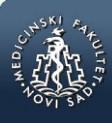md-medicaldata
Main menu:
- Naslovna/Home
- Arhiva/Archive
- Godina 2024, Broj 2
- Godina 2024, Broj 1
- Godina 2023, Broj 3
- Godina 2023, Broj 1-2
- Godina 2022, Broj 3
- Godina 2022, Broj 1-2
- Godina 2021, Broj 3-4
- Godina 2021, Broj 2
- Godina 2021, Broj 1
- Godina 2020, Broj 4
- Godina 2020, Broj 3
- Godina 2020, Broj 2
- Godina 2020, Broj 1
- Godina 2019, Broj 3
- Godina 2019, Broj 2
- Godina 2019, Broj 1
- Godina 2018, Broj 4
- Godina 2018, Broj 3
- Godina 2018, Broj 2
- Godina 2018, Broj 1
- Godina 2017, Broj 4
- Godina 2017, Broj 3
- Godina 2017, Broj 2
- Godina 2017, Broj 1
- Godina 2016, Broj 4
- Godina 2016, Broj 3
- Godina 2016, Broj 2
- Godina 2016, Broj 1
- Godina 2015, Broj 4
- Godina 2015, Broj 3
- Godina 2015, Broj 2
- Godina 2015, Broj 1
- Godina 2014, Broj 4
- Godina 2014, Broj 3
- Godina 2014, Broj 2
- Godina 2014, Broj 1
- Godina 2013, Broj 4
- Godina 2013, Broj 3
- Godina 2013, Broj 2
- Godina 2013, Broj 1
- Godina 2012, Broj 4
- Godina 2012, Broj 3
- Godina 2012, Broj 2
- Godina 2012, Broj 1
- Godina 2011, Broj 4
- Godina 2011, Broj 3
- Godina 2011, Broj 2
- Godina 2011, Broj 1
- Godina 2010, Broj 4
- Godina 2010, Broj 3
- Godina 2010, Broj 2
- Godina 2010, Broj 1
- Godina 2009, Broj 4
- Godina 2009, Broj 3
- Godina 2009, Broj 2
- Godina 2009, Broj 1
- Supplement
- Galerija/Gallery
- Dešavanja/Events
- Uputstva/Instructions
- Redakcija/Redaction
- Izdavač/Publisher
- Pretplata /Subscriptions
- Saradnja/Cooperation
- Vesti/News
- Kontakt/Contact
 Pasterovo društvo
Pasterovo društvo
- Disclosure of Potential Conflicts of Interest
- WorldMedical Association Declaration of Helsinki Ethical Principles for Medical Research Involving Human Subjects
- Committee on publication Ethics
CIP - Каталогизација у публикацији
Народна библиотека Србије, Београд
61
MD : Medical Data : medicinska revija = medical review / glavni i odgovorni urednik Dušan Lalošević. - Vol. 1, no. 1 (2009)- . - Zemun : Udruženje za kulturu povezivanja Most Art Jugoslavija ; Novi Sad : Pasterovo društvo, 2009- (Beograd : Scripta Internacional). - 30 cm
Dostupno i na: http://www.md-medicaldata.com. - Tri puta godišnje.
ISSN 1821-1585 = MD. Medical Data
COBISS.SR-ID 158558988
PRAVO PACIJENTA NA INFORMISANI PRISTANAK
/
THE RIGHT OF THE PATIENT TO INFORMED CONSENT
Authors
Jovana Pušac
Advokat iz Banjaluke; docent na Fakultetu pravnih nauka Panevropskog Univerziteta „Apeiron“, Banja Luka
UDK: 342.726:616-052
614.253.83
The paper was received / Rad primljen: 01.10.2024.
Accepted / Rad prihvaćen: 12.11.2024.
Correspondence to:
Jovana Pušac
Fakultet pravnih nauka Panevropskog Univerziteta „Apeiron“, Banja Luka,
Bosna i Hercegovina
e-mail: jovana.pusac@jp-lawoffice.com
Sažetak
Jedno od osnovnih prava pacijenta u ostvarivanju zdravstvene zaštite jeste pravo da dobije obaveštenje od strane zdravstvenog radnika koje mu je potrebno kako bi doneo odluku da pristane ili ne pristane na predloženu zdravstvenu uslugu (medicinsku meru). Pacijenta ne obavezuje pristanak kome nije prethodilo potrebno obaveštenje, a nadležni zdravstveni radnik koji preduzima medicinsku meru, odnosno vrši zdravstvenu uslugu, u tom slučaju snosi rizik za štetne posledice. Zakonodavac posebno naglašava neophodnost pismenog pristanka pacijenta, odnosno njegovog zakonskog zastupnika kada je u pitanju preduzimanje predloženih invazivnih dijagnostičkih procedura, operativnih zahvata, kao i medicinskih intervencija nad licem sa smetnjama u mentalnom zdravlju. S druge strane, analiza sudske prakse pokazuje da prethodno obaveštenje pacijenta gotovo nije moguće učiniti taksativno i detaljno kako to nalaže zakonska regulativa, te da opseg obaveštavanja pacijenta zavisi i od zahteva samog pacijenta. .
Ključne reči:
pravo na informaciju, pravo na obaveštenje, pristanak pacijenta, medicinski tretman, zdravstvena usluga.
Abstract
One of the basic rights of the patient in the realization of health care is the right to receive the notification from the healthcare worker that he needs in order to make a decision to agree or not to agree to the proposed health service (medical measure). The patient is not bound by the consent that was not preceded by the necessary notification, and the competent healthcare worker who undertakes the medical measure, i.e. performs the health service, in that case bears the risk of adverse consequences. The legislator particularly emphasizes the necessity of the written consent of the patient, that is, his legal representative, when it comes to undertaking the proposed invasive diagnostic procedures, operative procedures and medical intervention on a person with mental health disorders. On the other hand, the analysis of judicial practice shows that it is almost impossible to inform the patient in a comprehensive and detailed manner, as required by law, and that the extent of informing the patient also depends on the patient’s request.
Key words:
the patient, right to information, right to notification, patient’s consent, medical treatment, health service
References:
- Wiens MO, Kissoon N, Holsti L. Challenges in pediatric post-sepsis care in resource limited settings: a narrative review. Transl Pediatr. 2021;10(10):2666-77.
- World Helath Organization Global Health Observatory. Causes of child mortality. 2024 www.who.int/gho/child_health/mortality/causes/en
- Prusakowski MK, Chen AP. Pediatric Sepsis. Emerg Med Clin North Am. 2017;35(1):123-38.
- Angus DC, Linde-Zwirble WT, Lidicker J, Clermont G, Carcillo J, Pinsky MR. Epidemiology of severe sepsis in the United States:analysis of incidence, outcome, and associated costs of care. Crit Care Med. 2001;29:1303-10.
- Singer M, Deutschman CS, Seymour CW, Shankar-Hari M, Annane D, Bauer M. et al. The Third International Consensus Definitions for Sepsis and Septic Shock (Sepsis-3). JAMA. 2016;315:801–10.
- Arina P, Singer M. Pathophysiology of sepsis. Curr Opin Anaesthesiol. 2021;34(2):77-84.
- Pieren DKJ, Boer MC, de Wit J. The adaptive immune system in early life: The shift makes in count. Front Immunol. 2022;13:1031924.
- Carrol ED, Ranjit S, Menon K, Bennett TD, Sanchez-Pinto LN, Zimmerman JJ, et al. Operationalizing Appropriate Sepsis Definitions in Children Worldwide: Considerations for the Pediatric Sepsis Defionition Taskforce. Pediatr Crit Care Med. 2023;24(6):e263-e271.
- Stoll BJ, Puopolo KM, Hansen NI, Sánchez PJ, Bell EF, Carlo WA, et al. Early-Onset Neonatal Sepsis 2015 to 2017, the Rise of Escheria coli, and the Need for Novel Prevention Strategies. JAMA Pediatr. 2020;174(7):e200593.
- Posfay-Barbe KM, Wald ER. Listeriosis. Semin Fetal Neonatal Med. 2009;14(4):228-33.
- Coggins SA, Glaser K. Updates in Late-Onset Sepsis: Risk Assessment, Therapy, and Outcomes. Neoreviews. 2022;23(11):728-55.
- Hartman ME, Linde-Zwirble WT, Angus DC, Scott Watson R. Trends in the epidemiology of pediatric severe sepsis- Pediatr Crit Care Med. 2013;14(7):686-93.
- Mierzchała-Pasierb M, Lipínska-Gediga M. Sepsis diagnosis and monitoring – procalcitonin as standard, but what next? Anaesthesiol Intensive Ther. 2019;51(4):299-305.
- Chaudhuri PK, Ghosh A, Sinha V, Singh BK, Singh M, Lugova H, et al. The Role of C-reactive Protein Estimation in Determining the Duration of Antibiotic Therapy in Neonatal Sepsis. Cureus. 2022;14(10):e30211.
- Tian BWCA, Agnoletti V, Ansaloni L, Coccolini F, Bravi F, Sartelli M, et al. Management of Intra-Abdominal Infections: The Role of Procalcitonin. Antibiotics (Basel). 2023;12(9):1406.
- Liang J, Cai Y, Shao Y. Comparison of presepsin and Mid-regional pro-adrenomedullin in the diagnosis of sepsis or septic shock: a systematic review and meta-analysis. BMC Infect Dis. 2023;23(1):288.
- Gude SS, Peddi NC, Vuppalapati S, Gopal SV, Ramesh HM, Guse SS. Biomarkers of Neonatal Sepsis: From Being Mere Numbers to Becoming Guiding Diagnostics. Cureus. 2022;14(3):e23215.
- Geroteo JS, Levy M, Gotchac J, Brissaud O, Dauger S. Fluid bolus therapy in pediatric sepsis: a narrative review. Eur J Med Res. 2022;27(1):246.
- Angus DC, Wax RS. Epidemiology of sepsis:an update. Critical Care Medicine. 2001; 29(7):109-116.
- Watson RS, Carcillo JA. Scope and epidemiology of pediatric sepsis. Pediatric Critical Care Medicine. 2005;6(3):3-5.
- Lakbar I, Einav S, Lalevée N, Martin-Loeches I, Pastene B, Leone M. Interactions between Gender and Sepsis-Implications for the Future. Microorganisms. 2023;11(3):746.
- Garcia-Gomez E, Gonzalez-Pedrajo B, Camacho-Arroyo I. Role of sex steroid hormones in bacterial-host interactions. Biomed Res Int. 2013;2013:928-9.
- Rudd KE, Johnson SC, Agesa KM, Shackelford KA, Tsoi D, Kievlan DR, et al. Global, regional, and national sepsis incidence and mortality, 1990-2017: analysis for the Global Burden of Disease Study. Lancet. 2020;395(10219):200-11.
- Martin GS, Mannino DM, Eaton S, Moss M. The epidemiology of sepsis in the United States from 1979 through 2000. New England Journal of Medicine. 2003;348(16):1546-54.
- Kaplan JM, Wong HR. Biomarker discovery and development in pediatric critical care medicine. Pediatr Crit Care Med. 2011;12(2):165-73.
- Karlsson S, Heikkinen M, Pulkki K, Kolho E. Predictive value of procalcitonin decrease in patients with severe sepsis: a prospective observational study. Critical Care. 2010;14(6):R205.
- Mokline A, Sboui S, Saad MB, Eljemi I, Gasri B, Thabet L, et al. [Procalcitonin: The Ideal Biomarker To Guide Intitiation, Change and Withdrawal of Antibiotics in Septic Burn Patients?]. Ann Burns Fire Disasters. 2023;36(2):125-31.
- Borowski S, Schors I, Bar-Meir M. Time from symptom onset may influence C-reactive protein utility in the diagnosis of bacterial infections in the NICU. BMC Pediatr. 2022;22(1):715.
- Memar MY, Baghi HB. Presepsin: A promising biomarker for the detection of bacterial infections. Biomed Pharmacother. 2019;111:649-56.
- Urbonas V, Eidukaite A. Tamuliene I. The predictive value of soluble biomarkers and procalcitonin in the detection of bacteremia and sepsis in pediatric oncology patients with chemotherapy-induced febrile neutropenia. Cytokine. 2013;62:34-7.
PDF: 02 - Pušac J. MD-Medical Data 2024;16(3) 139-143.pdf
 Medicinski fakultet
Medicinski fakultet